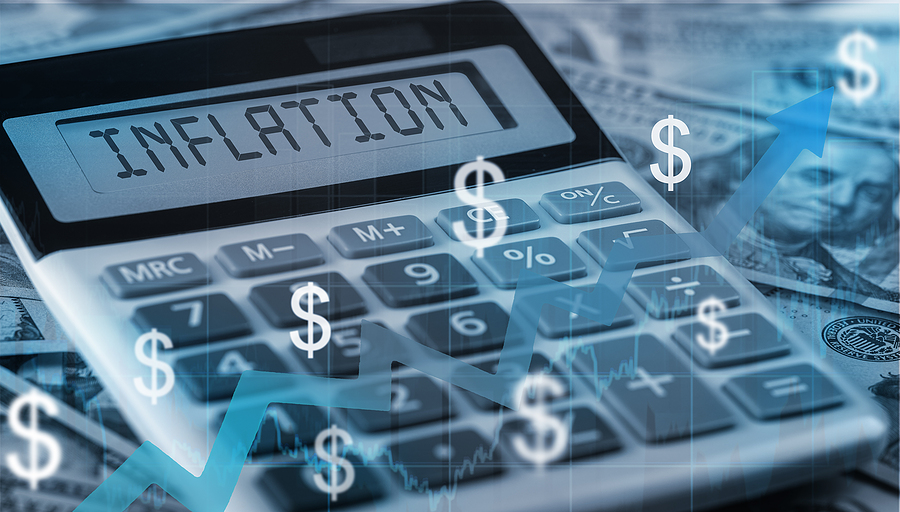How Will Inflation Affect Your 2023 Tax Bill?
Kirsch CPA Group
Aug 18, 2022

Inflation has been surging this year. The July 2022 consumer price index (CPI) was up 8.5% year over year, according to the latest data from the U.S. Bureau of Labor Statistics. The rate of inflation is expected to stay high for at least the rest of the year. Many taxpayers are understandably concerned about how elevated inflation rates will impact their 2023 tax situation.
When planning for the rest of your 2022 tax year, it’s important to understand what tax bracket you’ll be in next year, along with other inflation-adjusted tax figures. Here’s some important information to tide you over until the inflation-adjusted figures for 2023 are announced this fall.
Important: Many federal income tax figures, including the tax rate brackets, are indexed for inflation based on the so-called “chained CPI.” Due to the way the chained CPI numbers are calculated, their upticks during inflationary times are a bit lower than upticks in the regular CPI numbers that you read about in the media. But the differences are relatively minor. For purposes of this article, when CPI is used it’ll refer to the chained CPI.
How Inflation Adjustments Are Calculated
Surging inflation will be reflected in the monthly CPI numbers that will be used to calculate the inflation adjustment factor for your 2023 federal income tax brackets. The brackets and other inflation-adjusted federal tax parameters will probably be announced in November. They’ll be based on the monthly average of CPI changes during the federal government’s fiscal year that began in October 2021 and will end in September 2022.
For the 12 months that were used to calculate the inflation adjustment factor for the 2022 tax year, inflation was mild in the first half and started running hotter only in the second half. As a result, the inflation adjustment factor for 2022 was only about 3.1%. For example, the beginning of the 24% rate bracket for a married joint-filing couple is $178,150 of taxable income for 2022. That’s 3.13% higher than the corresponding number of $172,750 for 2021. So, the inflation adjustment factor for 2022 wasn’t a big tax-saving deal.
Things have changed. The inflation adjustment factor for the 2023 tax year will be much higher than in 2022. According to current calculations, the projected inflation adjustment factor will be around 7.4% based on the rate of inflation from October 2021 through July 2022. That figure could change, depending on what happens through September. For simplicity, let’s assume that the inflation adjustment factor for the 2023 tax year will be an even 7%.
Inflation-Adjusted Projections for the 2023 Tax Year
How would a 7% inflation adjustment factor affect your personal 2023 federal income tax situation? All the federal income tax bracket boundaries will increase by about 7%, but it won’t be exactly 7%, because federal tax parameters are adjusted in certain dollar increments with rounding.
For example, the tax bracket numbers are adjusted in $25 increments, and the standard deduction numbers are adjusted in $50 increments. Annual contribution limits for your 401(k) account are adjusted in $500 increments. The unified federal estate and gift tax exemption numbers are adjusted in $10,000 increments.
An assumed 7% inflation adjustment factor will increase the 2023 tax rate brackets as follows:
| Joint | Single | Head of Household | |
| Beginning of 12% bracket | $22,001 | $11,001 | $15,651 |
| Beginning of 22% bracket | $89,401 | $44,701 | $59,800 |
| Beginning of 24% bracket | $190,601 | $95,301 | $95,301 |
| Beginning of 32% bracket | $363,901 | $181,951 | $181,951 |
| Beginning of 35% bracket | $462,201 | $231,101 | $231,101 |
| Beginning of 37% bracket | $693,201 | $577,701 | $577,701 |
The bottom line is, other things being equal, you can have about 7% more taxable income next year and have the same federal income tax bill as this year.
Here how an assumed 7% inflation adjustment factor will affect other 2023 federal income tax figures:
| Joint | Single | Head of Household | |
| Standard deduction | $27,700 | $13,850 | $20,750 |
| Beginning of 15% bracket for long-term capital gains and qualified dividends | $89,201 | $44,601 | $59,701 |
| Beginning of 20% bracket for long-term capital gains and qualified dividends | $553,401 | $491,901 | $522,701 |
Other things being equal, these projected 2023 figures would mean that:
- Your standard deduction will shelter about 7% more income from the federal income tax next year,
- You could have about 7% more in federal-income-tax-free long-term capital gains and dividends next year, and
- You may have a better chance of avoiding the 20% maximum rate on long-term capital gains and dividends next year.
In addition, an assumed 7% inflation adjustment factor would increase the maximum 401(k) contribution from the current $20,500 to $21,950 next year. It would also increase several other federal tax parameters for 2023, including:
- The phase-out ranges for deductible contributions to traditional IRAs,
- The phase-out ranges for contributions to Roth IRAs,
- The phase-out ranges for the qualified business income (QBI) deduction for small business owners, and
- The unified federal gift and estate tax exemption.
Stay Tuned
The preceding taxpayer-friendly projections assume that Congress won’t pass any new legislation that affects your 2023 federal tax position. (The Inflation Reduction Act, which was recently signed into law, doesn’t affect individual tax rate brackets.) Although time is running out for tax-rate legislation to pass before this year’s mid-term elections, we’ve learned to expect the unexpected from Congress. Keep in touch with Kirsch CPA Group for the latest developments.
Contact us to learn more about planning for inflation
© Copyright 2022. All rights reserved.
More Resources

About The Author
Kirsch CPA Group is a full service CPA and business advisory firm helping businesses and organizations with accounting,…
Sign Up for Email Updates
Tags
Accounting & Financial News

Tax Law Changes: 10 Provisions Employers Need to Know
The One Big Beautiful Bill Act (OBBBA) includes a number of tax law changes that affect employers.…




